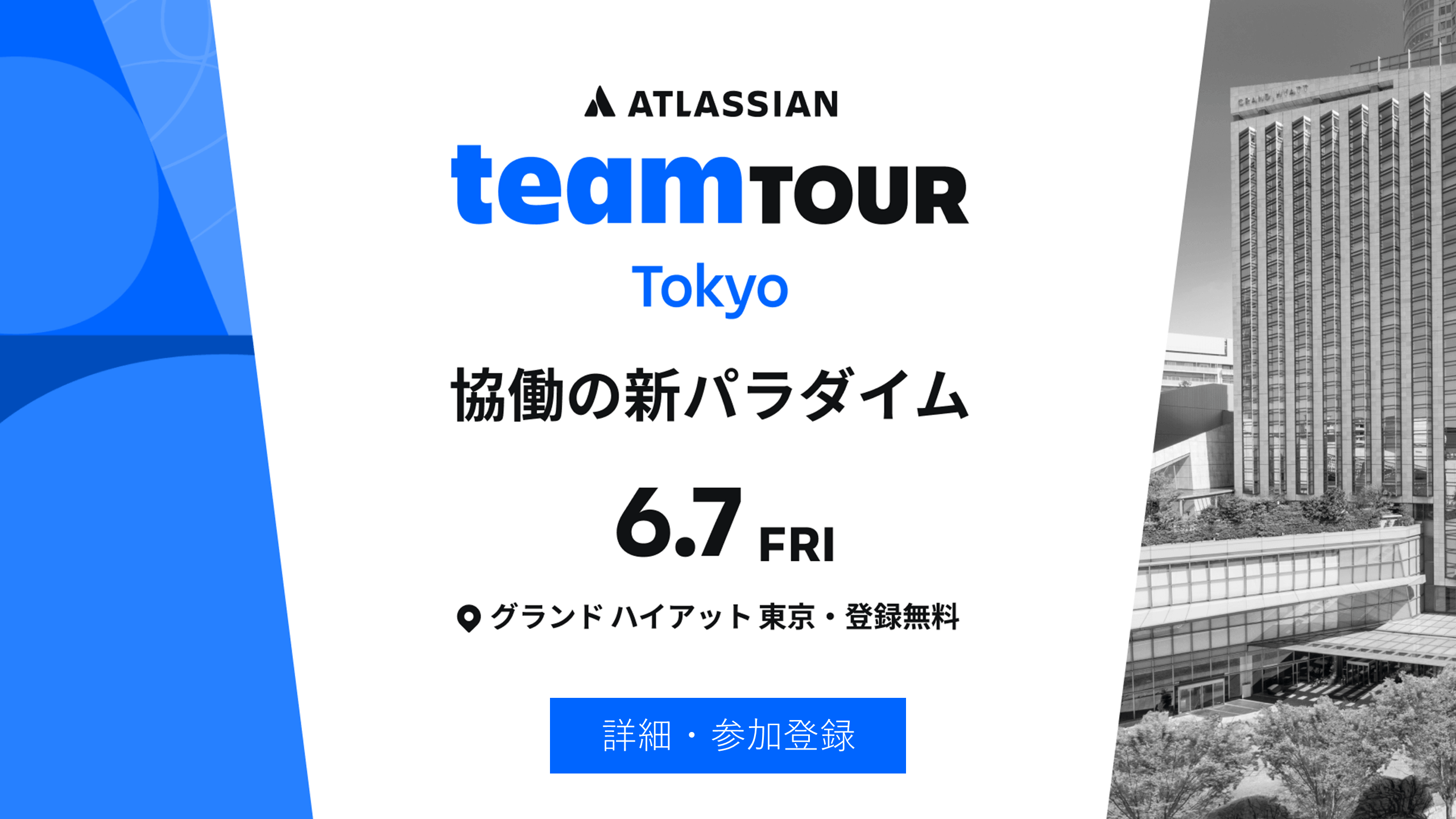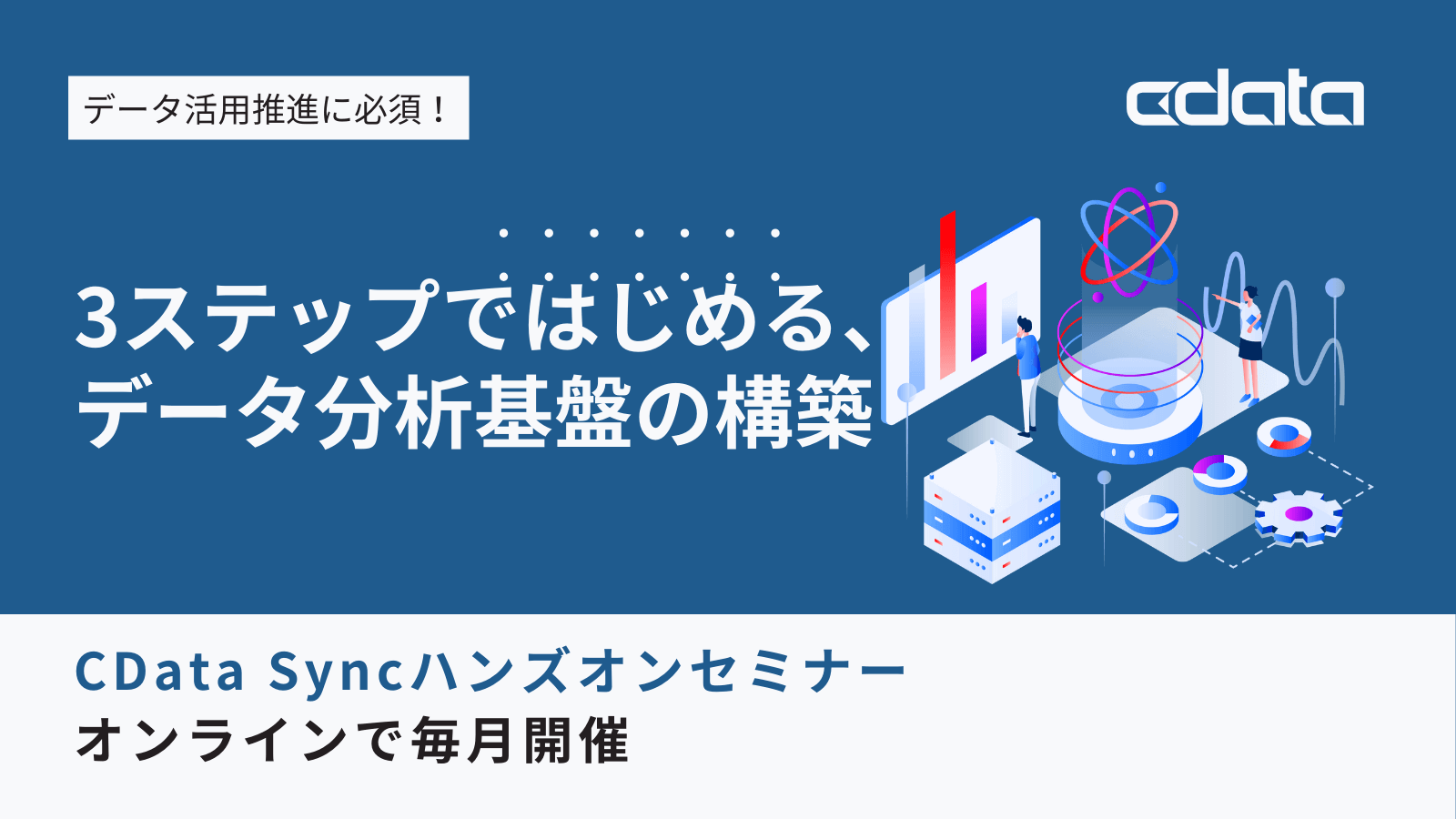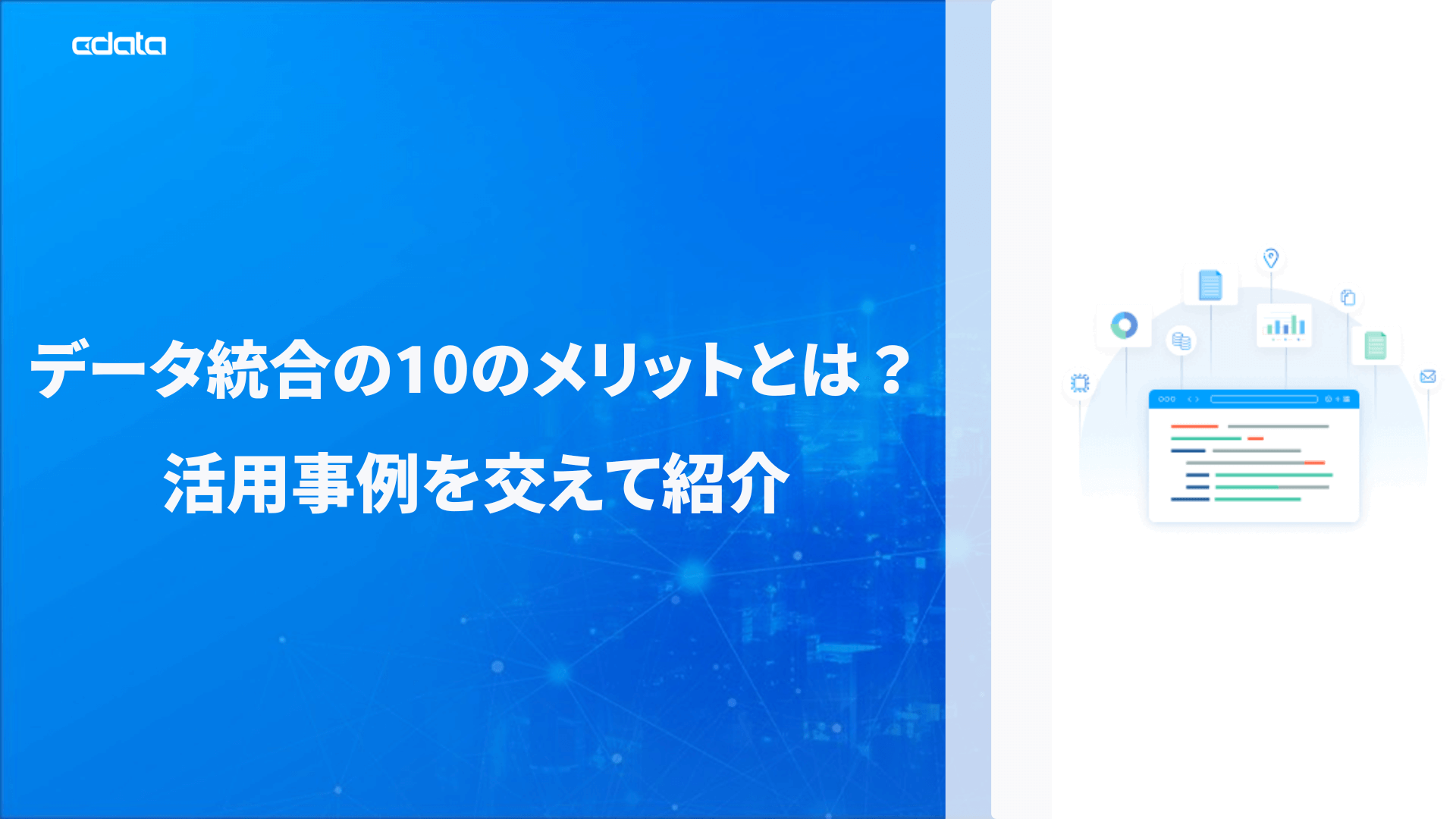ノーコードでクラウド上のデータとの連携を実現。
詳細はこちら →CData Software Japan - ナレッジベース
Latest Articles
- MySQL のデータをノーコードでREST API として公開する方法:CData API Server
- CData Sync AMI をAmazon Web Services(AWS)で起動
- Connect Cloud Guide: Derived Views, Saved Queries, and Custom Reports
- Connect Cloud Guide: SSO (Single Sign-On) and User-Defined Credentials
- Connect Cloud クイックスタート
- Shopify APIのバージョンアップに伴う弊社製品の対応について
Latest KB Entries
- DBAmp: Serial Number Expiration Date Shows 1999 or Expired
- CData Drivers のライセンスについて
- Spring4Shell に関する概要
- Update Required: HubSpot Connectivity
- CData Sync で差分更新を設定
- Apache Log4j2 Overview
ODBC Drivers
- [ article ] FoxPro でBox データを操作
- [ article ] Linux/Unix 上でPHP からOracle のデータに接続・連携
- [ article ] StiLL からCData Software ODBC Driver を使ってAzure Data ...
- [ article ] QlikView でDynamics 365 Business Central データにODBC ...
JDBC Drivers
- [ article ] Apache Spark でParquet データをSQL で操作する方法
- [ article ] IntelliJ からLinkedIn データに連携
- [ article ] DB2 JDBC ドライバーを使用したOBIEE でのDB2 レポート
- [ article ] ColdFusion にリアルタイムGoogle Cloud Storage ...
SSIS Components
- [ article ] YouTube Analytics をSSIS 経由でSQL サーバーにバックアップする
- [ article ] SSIS を使ってOutreach.io データをSQL Server にインポート
- [ article ] Azure Data Catalog データからSQL Server ...
- [ article ] SSIS を使ってGraphQL データをSQL Server にインポート
ADO.NET Providers
- [ article ] Oracle データをDevExpress Data Grid にデータバインドする。
- [ article ] Infragistics XamDataGrid を使用してAvalara AvaTax ...
- [ article ] PowerShell からEnterpriseDB ...
- [ article ] LINQ to Neo4J データに連携してみた
Excel Add-Ins
- [ article ] Excel を使ってCockroachDB にデータを追加したり、CockroachDB ...
- [ article ] Excel を使ってGoogle Cloud Storage にデータを追加したり、Google ...
- [ article ] Excel を使ってSage 200 にデータを追加したり、Sage 200 のデータを編集する方法
- [ article ] Mac OS X 上のMS Excel でSendGrid データを連携利用
API Server
- [ article ] Slingshot でExcel のデータ連携してダッシュボードを作成
- [ article ] OData データをSisense でビジュアライズ
- [ article ] SharePoint Excel Services からCData ODBC Driver for ...
- [ article ] ローコードアプリ開発プラットフォームOutSystems でExcel 連携アプリを作成
Data Sync
- [ article ] Google Cloud SQL へのスマレジ データのETL/ELT ...
- [ article ] Adobe Analytics データを複数のデータベースにレプリケーション。
- [ article ] Google Cloud SQL へのSage 50 UK データのETL/ELT ...
- [ article ] Google BigQuery へのスマレジ データのETL/ELT ...
Windows PowerShell
- [ article ] PowerShell からGoogle Analytics ...
- [ article ] PowerShell からGoogle Data Catalog ...
- [ article ] PowerShell からAmazon S3 データに接続してデータの取得・更新・挿入・削除・CSV ...
- [ article ] PowerShell を使ってSnapchat Ads データをSQL Server ...
FireDAC Components
- [ article ] Delphi のGoogle Spanner データへのデータバインドコントロール
- [ article ] Delphi のGoogle Campaign Manager データへのデータバインドコントロール
- [ article ] Delphi のIBM Informix データへのデータバインドコントロール
- [ article ] Delphi のクラウドサイン データへのデータバインドコントロール






